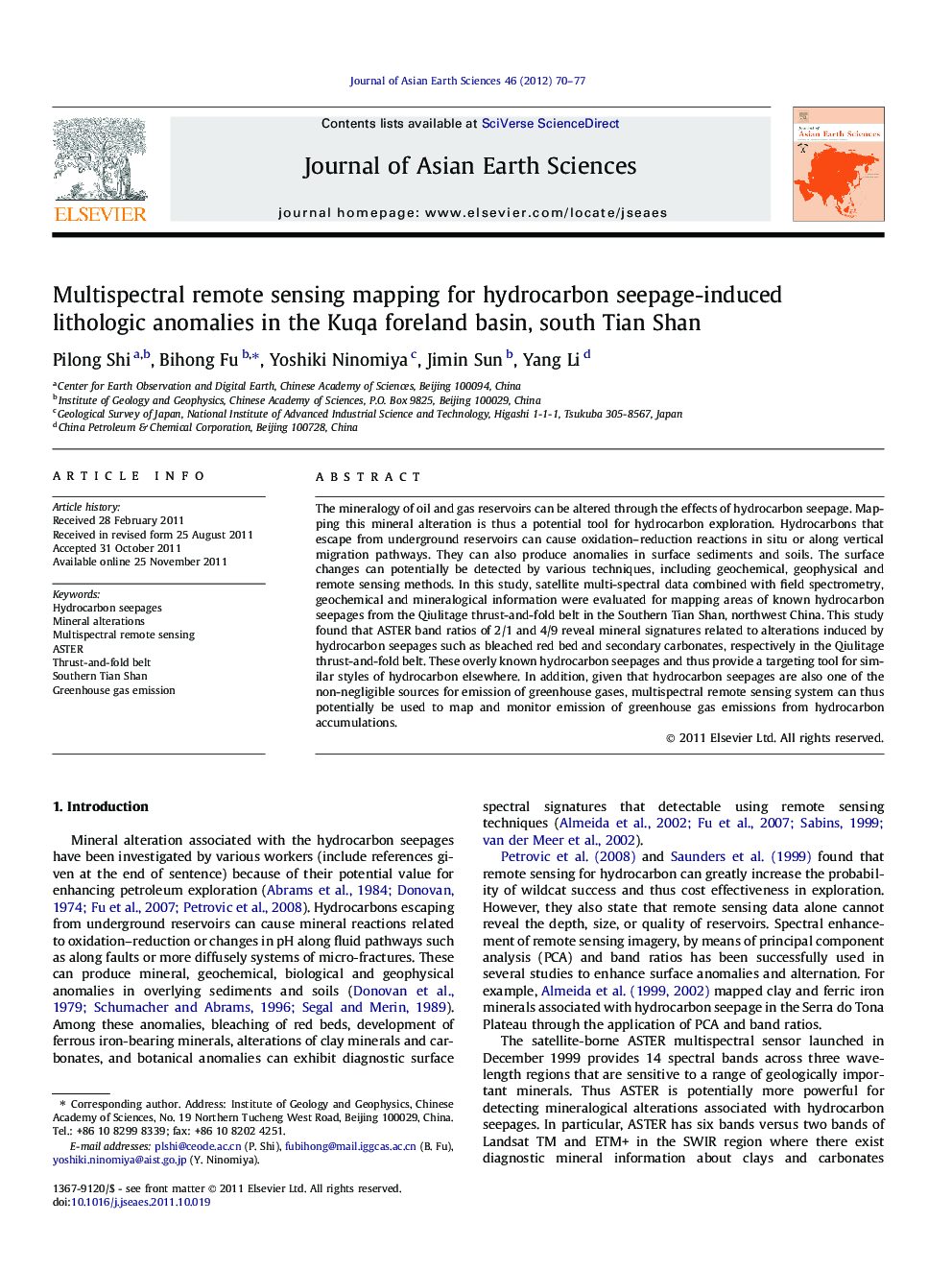| Article ID | Journal | Published Year | Pages | File Type |
|---|---|---|---|---|
| 4731535 | Journal of Asian Earth Sciences | 2012 | 8 Pages |
The mineralogy of oil and gas reservoirs can be altered through the effects of hydrocarbon seepage. Mapping this mineral alteration is thus a potential tool for hydrocarbon exploration. Hydrocarbons that escape from underground reservoirs can cause oxidation–reduction reactions in situ or along vertical migration pathways. They can also produce anomalies in surface sediments and soils. The surface changes can potentially be detected by various techniques, including geochemical, geophysical and remote sensing methods. In this study, satellite multi-spectral data combined with field spectrometry, geochemical and mineralogical information were evaluated for mapping areas of known hydrocarbon seepages from the Qiulitage thrust-and-fold belt in the Southern Tian Shan, northwest China. This study found that ASTER band ratios of 2/1 and 4/9 reveal mineral signatures related to alterations induced by hydrocarbon seepages such as bleached red bed and secondary carbonates, respectively in the Qiulitage thrust-and-fold belt. These overly known hydrocarbon seepages and thus provide a targeting tool for similar styles of hydrocarbon elsewhere. In addition, given that hydrocarbon seepages are also one of the non-negligible sources for emission of greenhouse gases, multispectral remote sensing system can thus potentially be used to map and monitor emission of greenhouse gas emissions from hydrocarbon accumulations.
Graphical abstractFigure optionsDownload full-size imageDownload as PowerPoint slideHighlights► Mineral alteration anomalies were mapped in West China using ASTER data. ► Analyses indicate the anomalies are directly related with hydrocarbon seepages. ► A model showing the hydrocarbon seepage and structural feature was built. ► We suggest two potential petroleum exploration targets.
